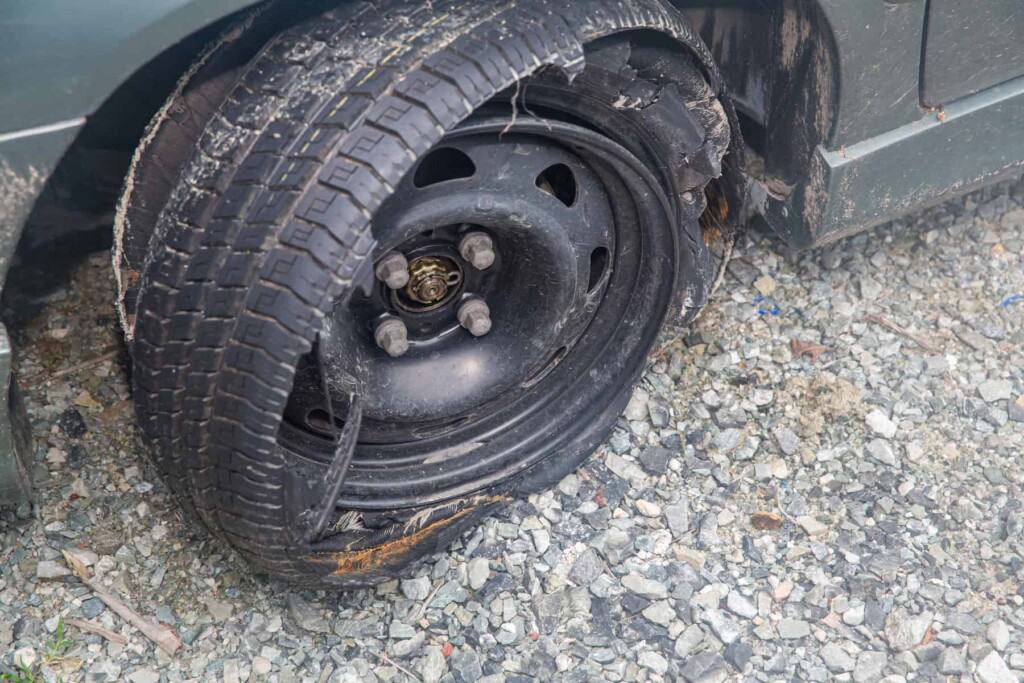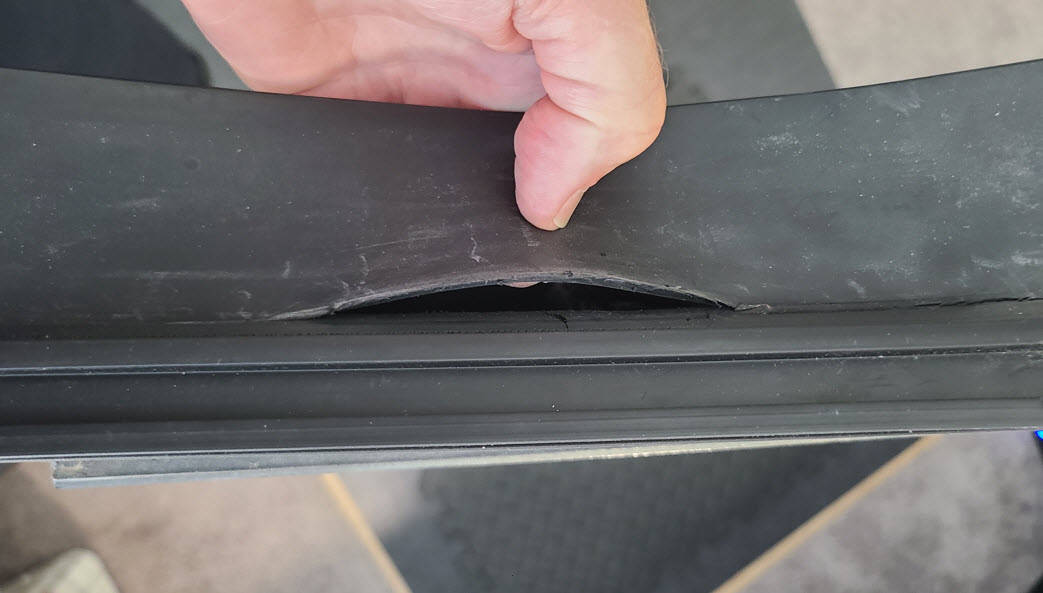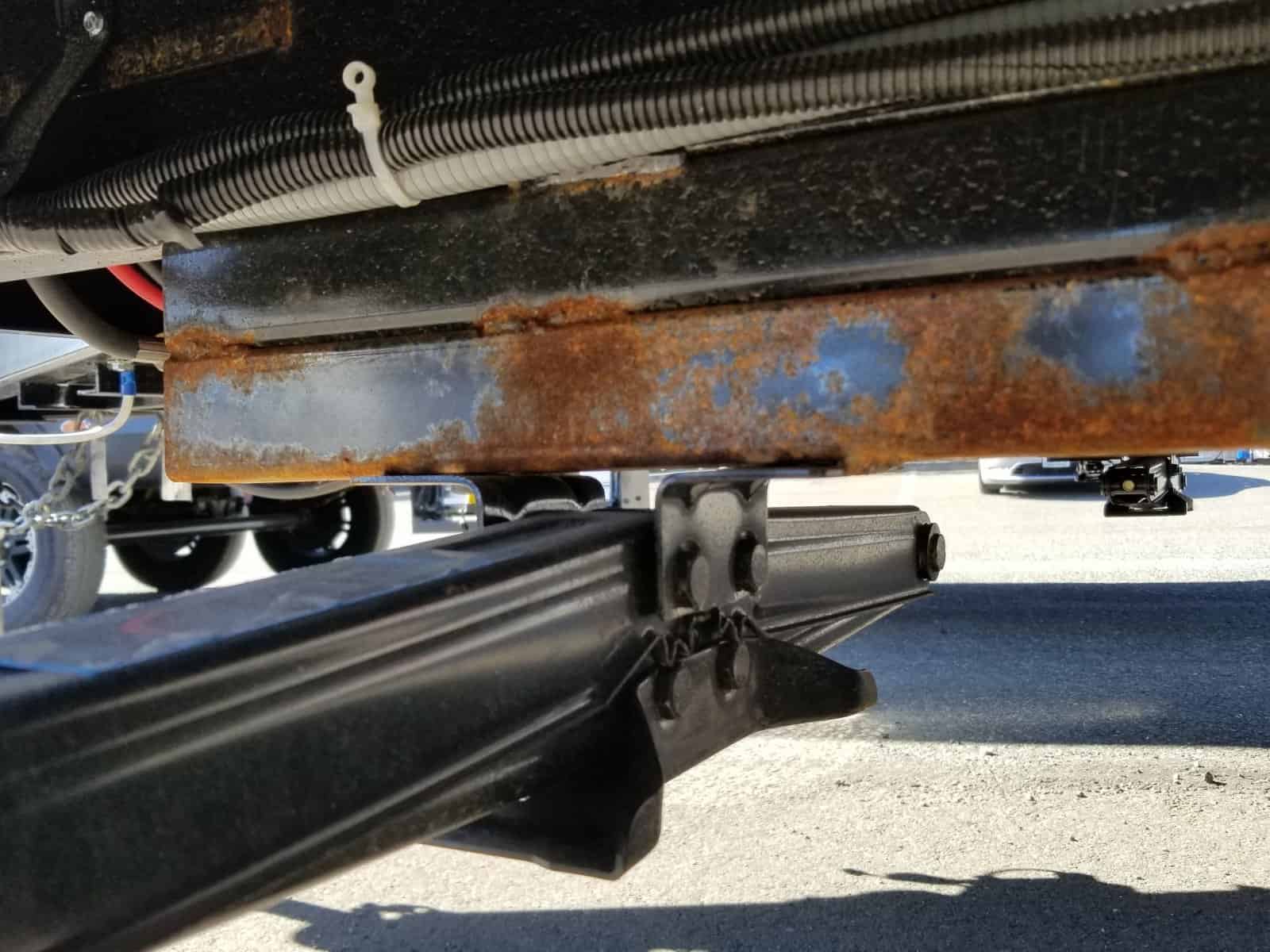Summer temperatures seem to be climbing higher every year. This is great for seasonal RVers who want to take advantage of the warm weather and explore the country. However, heat can also cause a variety of problems for your vehicle. This begs the question: How hot is too hot for RV tires?
Tires are designed to be extremely durable and heat-resistant. After all, they have to withstand a tremendous amount of weight and friction. But even the best RV tires have their limits. Extremely hot temperatures can damage or even destroy your RV tires.
Learn how to prevent heat damage and keep tires longer.
If your tires are a bit old and worn down, they’re more likely to succumb to heat damage. But it can happen to anyone at any time, so it’s important to be vigilant and proactive in your approach. Read on to learn more about how heat can damage RV tires, and what you can do to prevent these problems.
All About RV Tires and Heat
When you think about RV tires overheating, you probably imagine it’s because they spin too fast or are exposed to high outdoor temperatures. Although these factors can certainly play a role, heat damage usually takes place over a long period of time instead of a single hot day.
Prolonged exposure to hot, dry conditions can wreak havoc on your tires.
In this situation, tires can hold up just fine for a while, but eventually it takes a toll. And once the damage begins, it’s nearly impossible to fix. You can apply short-term solutions, but in the end, you’ll always need to replace the tire.
This is why it’s important to discuss the relationship between tires and heat. Tires are designed to survive immense friction (and, therefore, high temperatures).
But if there’s a flaw in the design, or the rubber begins to break down, the heat builds up more and more. The rubber will soften and stretch as it heats up. This exacerbates the problem even further! Eventually, you could reach a state where the tire bursts or melts.
Over time, tires naturally age and break down.
However, you need to keep an eye out for dry rot. This occurs when a tire’s protective oils and coatings begin to dry out. Once the protection is stripped away, the rubber may begin to crack and crumble.
Frequent changes in temperature, humidity, and elevation can also cause the rubber to shrink and stretch. Carefully monitor your tires and do everything you can to keep them in prime condition.
How Hot is Too Hot for RV Tires?
Answering the question “How hot is too hot for RV tires?” is tricky, but you can start by looking at some rule-of-thumb measurements.
In general, your tires should never exceed 200 degrees Fahrenheit.
Some tire models break down at around 220 degrees, but you don’t want to push too close to the upper limit.
However, it’s also worth mentioning that it’s difficult to accurately measure your tire temperature. The hottest part of a tire is usually around the radial belt, and this can be hard to reach without a needle probe. The outside of a tire will usually be cooler than the inside because of airflow.
Tire pressure monitoring systems are helpful (even if they only measure the temperature inside the tire rim).
TPMS systems don’t tell the whole story about tire temperature. That’s because tire rims are often significantly cooler than the tire interior. But if your TPMS is alerting you to high temperatures, you can assume that you’re approaching a dangerous level. Most TPMS systems will flag any tire temperature of 158 degrees or more.
As you can see, it can be difficult to concretely determine the hottest temperature RV tires can tolerate. But if you listen to your TPMS or register a temperature of 200+ degrees some other way, you need to stop driving for the day to let your tires cool off.

8 Warning Signs Your RV Tires Are Unsafe
Although tires can always develop unexpected leaks, it’s rare for a tire to blow without warning. If you regularly inspect your tires, you’ll be able to spot early warning signs. The problems are particularly visible during seasons with extreme temperatures (typically summer and winter).
If you suspect that the weather is becoming too hot for RV tires, look out for the following issues:
If you spot any of these issues in your RV tires, it’s time to look for a new set. As we mentioned earlier, heat damage is impossible to fix once it takes over. But you can protect your next set of tires by following the tips below.
You also need to keep a close eye on your tire pressure.
Temperature changes can cause your tires to swell or shrink. If the tires are overinflated, the center of the tread will wear down faster than the sides. On the other hand, when tires are underinflated, the sides bear the brunt of the force.
Use your tire pressure monitoring system to ensure that all your tires are set to the correct pressure every day.
5 Ways to Protect Your RV Tires from Heat Damage
RV tires can be pretty expensive, and the money adds up if you frequently have to buy new sets. If you take the right preventative measures, you’ll be able to preserve your tires for a nice long time. Here are five ways to protect your RV tires from heat damage.
1. Be aware of the tire temperature
First of all, you need to know when it’s too hot for RV tires. Of course, you won’t be driving anywhere where the daily temperature is over 200 degrees! But you need to remember that tires can get hotter than the surrounding air.
If you’re traveling through a particularly hot area, be sure to check on your tires as you go. Give them time to cool down if the TPMS alerts you. Pay attention to any handling issues or smells of burning rubber too!
2. Refresh tire coatings during cleaning
Heat can cause a lot of problems for your wheels. But dry conditions can make things much worse! If you’re in a hot, dry climate, your tires are at risk for dry rot. In order to prevent tires from crumbling and cracking, you need to reapply protective coatings. Wax-based cleaning products are safe enough to keep your tires clean and flexible.
If you are planning to use other tire protectants or cleaning products, read the product labels and be aware of what other chemicals are going on your tire. Stay away from using any cleaning products that are petroleum-based, as the products may degrade the rubber’s weathering agents that may lead to premature cracking.
Goodyear.com
3. Use tire covers
UV rays can also speed up the process of dry rot. Any tire that’s under the direct sun is in danger. Therefore, you should use tire covers as often as you can. If you park your RV for extended periods, attach the tire covers. Don’t forget about your spare tires. If they are mounted on the back of your RV, be sure to cover them up. Any level of protection can help.
4. Limit the strain on the tires
Tires are more likely to explode if they’re under excessive pressure. Understand how GVWR impacts tire safety, and make sure your RV is at the appropriate weight. The less strain you put on the tires, the longer they’ll last.
5. Stick to regular tire maintenance
Keeping RV tires safe starts with RV maintenance. Stick to a schedule of general tire care practices. This includes things like switching between seasonal tires, rotating to ensure even tread wear, and washing your wheels along with the rest of the vehicle. If you prioritize your tires throughout the year, you’re less likely to encounter major problems down the road.
Related Articles:




